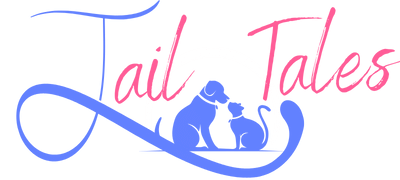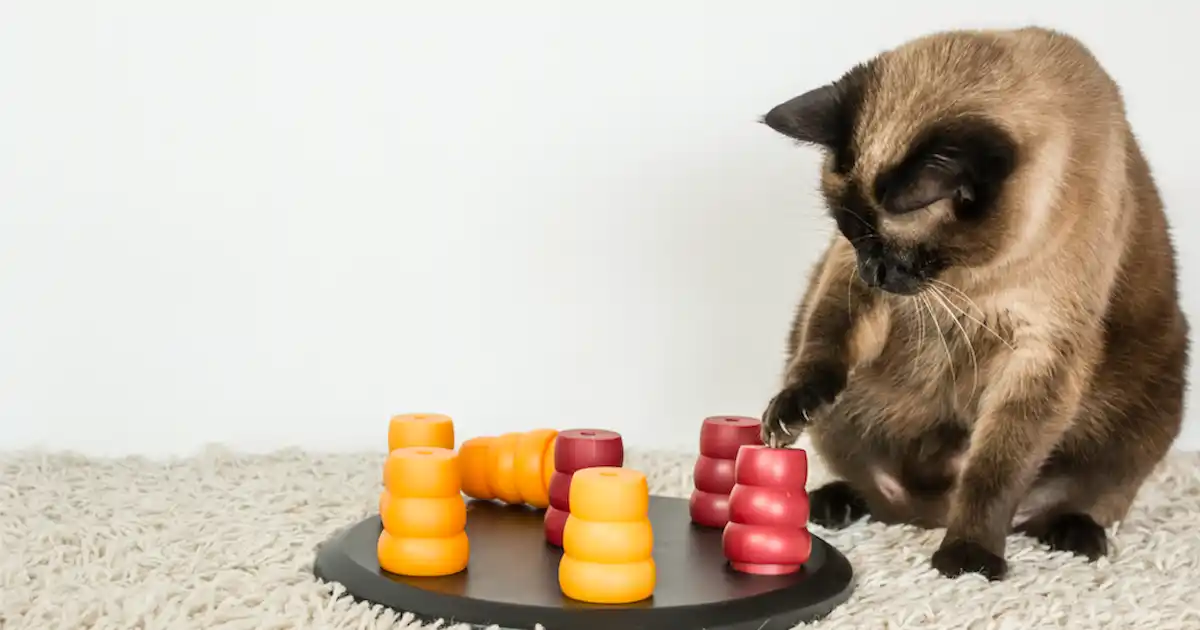
Behaviourist Clare Hemington says: Hands up those of you who used to, or still do plonk your cat’s food in a bowl and leave it down for him to nibble on at leisure?
 Before I immersed myself in the world of cat behaviour, this is exactly what I used to do with my cats’ food. But lots of study and many years later, I would find myself, during consultations with cat parents, pontificating about the benefits of puzzle feeding only to be met by a quizzical look from almost each and every one.
Before I immersed myself in the world of cat behaviour, this is exactly what I used to do with my cats’ food. But lots of study and many years later, I would find myself, during consultations with cat parents, pontificating about the benefits of puzzle feeding only to be met by a quizzical look from almost each and every one.
These days the concept of puzzle, or interactive feeding your cat is much more commonplace and pet stores are simply awash with feeders of varying types and complexities. For those of you who are new to this approach of cat feeding let me explain.
A food puzzle is any type of receptacle that can hold wet or dry food which can be manipulated by a cat in a way that releases the food. Rather than just eating from a bowl of food that’s placed in front of him, your cat has to do a bit of problem solving first.
Puzzle feeding, also known as interactive feeding, or food enrichment, offers many benefits to cats.
Here are some of the advantages:
- Mental stimulation: Cats are natural hunters, and interactive feeding allows them to engage in hunting-like behaviours. Additionally, working out how to extract the food provides mental exercise and helps prevent boredom.
- Physical exercise: puzzle feeders encourage physical activity through pawing, batting, or rolling the feeder and this can contribute to weight loss and prevent obesity. Furthermore, by making mealtimes more challenging, cats spend more time engaged in the feeding process, which can give them a greater sense of satisfaction and a reduced desire for extra food.
- Slow feeding: It forces feline guzzlers to eat more slowly, thereby allowing for better digestion and reducing the chances of post-guzzle vomiting.
- Emotional well-being: Providing cats with puzzle feeding opportunities can give them a similar sense of fulfillment and achievement as actual hunting and in this way it can help alleviate stress, anxiety, or frustration and contribute to a happier, more contented cat.
- Bonding and social interaction: Participating in interactive feeding sessions with your cat, by for example, offering him a reward during puzzle solving, can be a wonderful way for you to create or strengthen your bond with him.
- Senior and junior cats. Let’s not forget about aging cats for whom puzzle feeding can help slow down the decline in cognitive function, and kittens who require lots of stimulating outlets for their energy!
- For indoor-only cats all of the above benefits play an even more crucial role in their health and well-being.
So now you’ve seen the benefits, you might just be tempted to invest in your first puzzle feeder. But which type should you get?
Assuming your cat is a puzzle-feeding novice the good news is you don’t need to spend any money at all. A beginner’s puzzle feeder can be something as simple as an egg carton (lid removed), yoghurt pots glued to a cardboard base, or a pyramid of loo roll tubes, containing some of your cat’s favourite kibble. Your cat will then need to use his paw to extract the food. Fun fact, by watching your cat you may be able to determine if he is left or right pawed!
As your cat becomes more used to the concept of working for his food, you can introduce more advanced feeders. There are those that are shaped like balls that have holes cut out so that when your cat pushes the ball with his paw or nose, the kibble will fall out. As for stationary feeders, there are those that are require a cat to move an object to get to the food underneath and some really complex ones which require cats to get food out of an object that’s within another object. If you’re feeling extravagant, and your cat is clearly enjoying this new way of acquiring his food, you could even invest in one of the multi-activity feeders which incorporate different elements such as small plastic cups, channels, textured surfaces and obstacles of different shapes all in a single unit. If you’re a creative type and have a cat that likes to jump, you could even make a puzzle feeding piñata – the sky’s the limit!
Introducing a puzzle feeder to your cat
When you first introduce your cat to puzzle feeding you might be tempted to place your newly acquired or home-made, feeder on the floor, replete with kibble and keep your fingers crossed that your cat will figure it out. Whilst it’s possible that he might, it’s always a good idea when introducing anything new to your cat to make the transition gradual. Not only that, but it might take a bit of trial and error with different types of feeders to work out which has the correct difficulty level for your cat and which he most enjoys engaging with. Some cats like mobile feeders that can be pushed or rolled with their nose and/or paw, while others prefer using their paws to dig out food from stationary feeders.
I’d suggest making your cat’s first experience of puzzle feeding as easy as possible. So, with that in mind I would position the puzzle feeder next to your cat’s food bowl and use a feeder that has multiple openings so your cat can easily see and smell the food. Then fill the feeder with lots of food, so that either the kibble is released more readily, or your cat will find it easier to pull some of the food out (depending which type of feeder you’re using). Alternatively, you can incentivise him by placing a few of his favourite treats into the feeder.
When your cat becomes used to the concept of working for his food and is showing no signs of frustration, gradually reduce the amount of food in his food bowl whilst correspondingly increasing the amount in the puzzle feeder so that eventually his entire daily allowance of dry food is given in the feeder, and you can then remove the bowl.
Puzzle feeders in multi cat households
Where you have more than one feline resident in your household, it is very important to have a number of feeders available in different places in your home; cats are solitary hunters and can find it stressful to eat in the same areas. The feeders should offer different levels of complexity to allow for each cat’s ability and there should be enough of them to allow you to rotate them every few days to keep your cats challenged, especially when they become more experienced.
A word to the wise, if you want to avoid the literal fallout of your cat’s puzzle feeding activities, kitchens and bathrooms are sensible locations to deal with mess!
It is important to keep an eye on your cat when your first introduce a food puzzle to ensure that his food intake is not reduced. If you are worried that he is not meeting his daily food requirements as a result of puzzle feeding you can either offer him his wet food in a bowl and reserve puzzle feeding activities for dry food only or provide some of his daily allowance of dry food in his bowl and the rest in the puzzle feeder.
Puzzle feeders for wet food
But what if your cat doesn’t eat dry food? When it comes to interactive feeders for wet cat food, there are options available. These include slow feeders which have obstacles or patterns that help slow the pace at which your cat eats; interactive food mats that have raised sections or patterns where you can spread out wet food for your cat to explore and lick off, or maze feeders specifically designed for wet food. Or you can use items that you have at home such as ice cube and muffin trays, or you can even put your cat’s wet food in a mug and place it on its side (on a mat) so that he will have to use his paws to pull the food out.
In all my years as a Cat Behaviourist, I have not yet come across a cat that would not adapt to puzzle feeding. This is because in the wild your cat would never happen across a fresh mouse, on a platter de-furred and garnished with fresh grass, ready for him to pop into his mouth with no effort required. This is effectively the experience we give cats when we serve them stationary food in a bowl. Your cat is a natural hunter and as such his instinct is to work for his food. This is why even senior cats, kittens, blind cats and cats with other disabilities can adapt to puzzle feeding.
I cannot over-emphasise the benefits that this simple change in the way we feed our cats can provide. It stimulates their minds, exercises their bodies, helps reduce stress and, when incorporated into their overall environmental enrichment it forms part of what helps them to live fun, happier and healthier lives.

